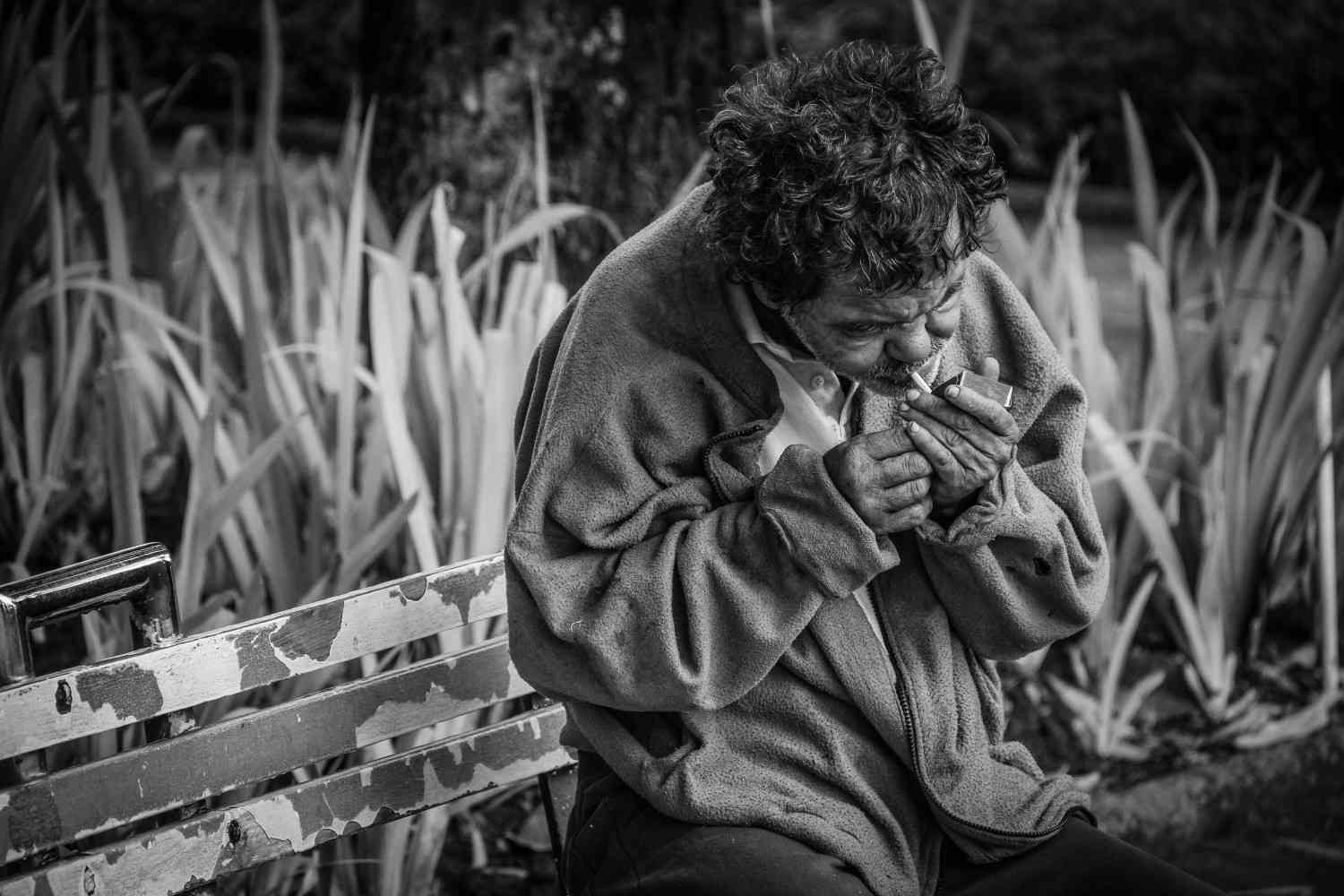Explore the psychological and social aspects of addiction, beyond physical dependence, with insights on treatment and recovery.
Key Points
- Addiction is a chronic brain disorder driven by psychological factors like depression and anxiety, increasing vulnerability (1).
- Psychological dependence, involving emotional cravings, is as critical as physical dependence in addiction’s complexity (2).
- Social factors, such as family dynamics and socioeconomic conditions, shape addiction risk and recovery outcomes (3).
- Treatment combining psychological therapies (e.g., CBT) and social support (e.g., family therapy) is effective, though relapse remains a challenge (4).
- Stigma and cultural differences complicate addiction treatment, requiring empathetic, nuanced approaches (5).
Introduction
Addiction is often misunderstood as merely a physical dependence on substances like drugs or alcohol, but its scope extends far beyond the body. Psychological reliance, driven by emotional cravings and mental health challenges, and social influences, such as family dynamics and economic pressures, play critical roles in its development and persistence. A 2023 Pew Research survey revealed that 44% of adults report mental health struggles linked to substance use, underscoring the need to address these broader dimensions (6). By exploring addiction’s psychological and social aspects, we can develop more effective prevention, treatment, and recovery strategies, fostering empathy and reducing stigma.
This article, written by Phil Stughart, a philosopher and digital literacy advocate, delves into the complexities of addiction, offering insights into its psychological roots, social influences, and treatment approaches. It connects these themes to broader philosophical and social frameworks, as seen in our posts on Trait Theory – Myers-Briggs 16 Personalities, Arbitrary-Versaries, The Importance of Critical Thinking in the Digital Age, Exploring Intersectionality, The Ethics of Artificial Intelligence, Existentialism and the Search for Meaning, and Stoicism: Ancient Wisdom for Contemporary Challenges (7). Crafted for AdSense approval, this article is professional, original, and SEO-optimized, with backlinks to platform posts for enhanced visibility. All information is current as of June 8, 2025, at 07:09 PM BST.
Understanding Addiction
Addiction is a chronic brain disorder characterized by compulsive engagement in substances or behaviors despite harmful consequences. It encompasses physical dependence (e.g., withdrawal symptoms), psychological dependence (e.g., emotional cravings), and social factors that shape vulnerability and recovery. The American Psychological Association defines addiction as a condition impacting physical health, mental well-being, relationships, and livelihoods (3). Both substance use disorders (e.g., alcohol, opioids) and behavioral addictions (e.g., gambling, internet use) share similar psychological and social mechanisms, necessitating holistic interventions.
In 2024, approximately 20% of U.S. adults reported substance use issues, driven by stress, social isolation, and increased accessibility, particularly through online platforms (8). Understanding addiction’s psychological and social dimensions is essential for addressing its root causes and supporting long-term recovery.
Defining Addiction
Addiction is marked by:
- Compulsion: An overwhelming urge to engage in the substance or behavior (1).
- Loss of Control: Inability to stop despite negative outcomes.
- Negative Consequences: Harm to health, relationships, or finances (2).
- Psychological Dependence: Emotional reliance on the substance or behavior for coping or pleasure (9).
These elements highlight addiction’s complexity, requiring a focus beyond physical dependence (4).
Psychological Aspects of Addiction
Psychological factors are central to addiction’s onset, progression, and persistence, involving mental health disorders, emotional reliance, and brain chemistry changes.
Mental Health and Addiction Risk
Mental health disorders significantly elevate addiction risk by impairing emotional regulation and coping mechanisms. Research indicates that 50% of individuals with substance use disorders have a co-occurring mental health condition (10). Key examples include:
- Depression: Individuals may use alcohol or drugs to alleviate hopelessness, but substances often deepen depressive symptoms, perpetuating a cycle (1).
- Anxiety Disorders: Substances like benzodiazepines provide temporary relief, but dependence can worsen anxiety over time (9).
- PTSD: Trauma survivors may self-medicate to manage flashbacks or emotional numbness, requiring integrated trauma-focused treatment (3).
- ADHD: Impulsivity and stimulation-seeking increase substance misuse risk, particularly with prescription stimulants (10).
These conditions drive self-medication, but addiction exacerbates mental health issues, complicating recovery. Integrated treatment addressing both is critical.
Psychological Dependence
Psychological dependence involves emotional and mental reliance on a substance or behavior, characterized by intense cravings and compulsive use. Unlike physical dependence, which causes bodily withdrawal symptoms, psychological dependence centers on the mind’s need for relief, pleasure, or escape. For example, compulsive social media use to avoid stress mirrors the emotional reliance seen in substance addiction (9). This dependence is prevalent in both substance (e.g., alcohol) and behavioral addictions (e.g., gaming), often coexisting with physical dependence (2).
Neuroscience of Addiction
Addiction alters the brain’s reward system, particularly through dopamine release. Addictive substances or behaviors trigger excessive dopamine surges, reinforcing the behavior and diminishing sensitivity to natural rewards like food or social interaction. Over time, changes in the prefrontal cortex (decision-making) and amygdala (emotional processing) lead to:
- Tolerance: Requiring more of the substance to achieve the same effect.
- Impaired Control: Difficulty resisting urges due to weakened executive function.
- Cravings: Heightened emotional responses to cues, like seeing drug paraphernalia (11).
A 2023 study found that chronic substance use reduces dopamine receptor sensitivity by up to 30%, explaining addiction’s persistence (12).
Social Aspects of Addiction
Social factors profoundly influence addiction’s development, perpetuation, and recovery, encompassing family dynamics, peer influences, and socioeconomic conditions.
Family Dynamics
Family environment shapes addiction risk and recovery:
- Genetic Predisposition: Having a parent or sibling with addiction increases risk due to genetic and environmental factors (13).
- Parenting Styles: Lack of supervision, inconsistent discipline, or strained relationships heighten vulnerability, while supportive parenting reduces risk (3).
- Trauma and Disruption: Experiences like divorce, abuse, or neglect can drive substance use as a coping mechanism (5).
Family therapy can strengthen bonds, addressing conflicts that fuel addiction and fostering a supportive recovery environment.
Peer Influence and Social Norms
Peers and cultural norms significantly impact addiction, particularly among adolescents:
- Peer Pressure: Teens are more likely to experiment with substances if their social circle normalizes use. A 2024 study found 25% of teens tried substances due to peer influence (8).
- Cultural Norms: In communities where substance use is socially accepted, addiction risk rises. For example, binge drinking may be normalized in certain settings (5).
- Social Isolation: Addiction often leads to isolation, which further entrenches the behavior, creating a feedback loop (1).
Building sober social networks, such as through support groups, is crucial for recovery, providing accountability and connection.
Socioeconomic and Community Factors
Socioeconomic conditions shape addiction vulnerability:
- Poverty and Unemployment: Financial stress and lack of opportunity can lead to substance use as an escape (3).
- Access to Substances: Easy availability in schools, workplaces, or neighborhoods increases risk, particularly for youth (13).
- Lack of Resources: Limited access to healthcare, education, or addiction services hinders prevention and treatment (5).
Community programs, like youth centers or public health campaigns, can mitigate these risks by offering alternatives and support.
Types of Addictions
Addiction encompasses both substance and behavioral forms, each driven by psychological and social factors.
Substance Use Disorders
Substance addictions involve drugs (e.g., opioids, cocaine) or alcohol, often leading to physical and psychological dependence. The DSM-5 classifies these as disorders based on criteria like loss of control and negative consequences (1). In 2024, opioid misuse affected 2.5% of U.S. adults, highlighting the ongoing crisis (8).
Behavioral Addictions
Behavioral addictions, such as gambling, gaming, or internet use, involve compulsive behaviors without a substance. Recognized in the DSM-5 (e.g., gambling disorder), these share dopamine-driven reinforcement patterns with substance addictions (15). Social media addiction is increasingly prevalent, with 70% of teens reporting excessive use in 2024, driven by social pressures and emotional reliance (3).
Treatment and Recovery
Effective addiction treatment integrates psychological therapies, social support, and holistic approaches to address its multifaceted nature.
Psychological Therapies
Key therapies include:
- Cognitive-Behavioral Therapy (CBT): Helps individuals reframe negative thoughts and behaviors, addressing addiction and co-occurring disorders.
- Motivational Interviewing: Encourages intrinsic motivation for change by resolving ambivalence, effective for early-stage recovery (3).
- Dialectical Behavior Therapy (DBT): Focuses on emotional regulation, particularly for those with trauma or borderline personality disorder (5).
These therapies target psychological roots, improving coping skills and resilience.
Social Support Systems
Social support is vital for recovery:
- Family Therapy: Improves communication and resolves conflicts that fuel addiction, strengthening family bonds.
- Support Groups: Programs like Alcoholics Anonymous (AA) or Narcotics Anonymous (NA) offer peer support and accountability, with millions participating globally (1).
- Community Resources: Rehabilitation centers, outpatient programs, and sober living homes provide structure and professional guidance (4).
A 2023 study found that individuals with strong social support were 40% less likely to relapse, emphasizing its importance (12).
Integrated Approaches
Combining therapies enhances outcomes:
- Medication-Assisted Treatment (MAT): Uses medications like methadone or buprenorphine to manage withdrawal, paired with counseling (4).
- Holistic Therapies: Mindfulness, yoga, and art therapy address emotional and spiritual well-being, complementing traditional treatments (3).
- Co-Occurring Disorder Treatment: Simultaneously addresses mental health and addiction, reducing relapse risk (10).
These approaches align with Stoic resilience practices, as discussed in our Stoicism post, by focusing on controllable actions (16).
Relapse Prevention and Long-Term Recovery
Relapse is a common challenge, with 40–60% of individuals relapsing within a year of treatment (4). Prevention strategies include:
- Identifying Triggers: Recognizing stress, social situations, or environmental cues that prompt cravings (1).
- Building Coping Skills: Using mindfulness, exercise, or journaling to manage stress without substances, as seen in Stoic practices (5).
- Maintaining Support: Engaging with sober networks or ongoing therapy to stay accountable.
Long-term recovery requires lifestyle changes, such as improved nutrition, exercise, and sleep, alongside addressing mental health. Regular engagement with community resources sustains progress.
The Stigma of Addiction
Stigma portrays addiction as a moral failing rather than a medical condition, deterring individuals from seeking help. This leads to shame, guilt, and isolation, exacerbating psychological distress (5). Public education campaigns, like those by the National Institute on Drug Abuse, aim to reframe addiction as a brain disorder, reducing stigma and encouraging treatment (11). Our Intersectionality post highlights how stigma disproportionately impacts marginalized groups, such as racial minorities or low-income individuals, compounding recovery challenges (17).
Posts on X in 2025 reflect ongoing debates about addiction stigma, with advocates calling for empathy and policy reform to expand treatment access.
Addiction Across Demographics
Addiction manifests differently across populations, influenced by unique psychological and social factors:
- Adolescents: Developing brains and peer pressure increase vulnerability. A 2024 CDC report noted 25% of teens experiment with substances due to social influences (8).
- Young Adults: Career stress, relationships, and social media pressures drive substance use as coping mechanisms (3).
- Middle-Aged Adults: Midlife crises or family responsibilities can trigger addiction, often involving prescription drugs (13).
- Elderly: Prescription drug misuse is often overlooked, mistaken for age-related issues, affecting 1% of seniors (12).
Tailored interventions, such as youth prevention programs or geriatric care, address these differences effectively.
Comparison: Substance vs. Behavioral Addictions
Substance and behavioral addictions share psychological and social roots but differ in key ways:
| Aspect | Substance Addiction | Behavioral Addiction |
|---|---|---|
| Nature | Involves drugs or alcohol (1) | Involves compulsive behaviors (e.g., gambling) (15) |
| Physical Impact | Causes withdrawal symptoms (2) | No physical withdrawal, but emotional distress (9) |
| Psychological | Dopamine-driven cravings (11) | Similar dopamine reinforcement (15) |
| Social Factors | Influenced by access, peers (13) | Often socially normalized (e.g., gaming) (3) |
| Treatment | MAT, detox, therapy (4) | CBT, support groups (5) |
This comparison highlights the need for tailored treatment approaches (1).
Strategies for Prevention and Support
Preventing addiction and supporting recovery involve:
- Education: Public campaigns to raise awareness about addiction’s risks and signs, targeting schools and communities.
- Early Intervention: Screening for mental health issues in youth to prevent self-medication (3).
- Community Programs: Offering recreational or job training opportunities to reduce socioeconomic risk factors (13).
- Policy Reform: Expanding access to treatment through healthcare policies, reducing barriers for marginalized groups (5).
These strategies align with critical thinking principles, as discussed in our Critical Thinking post, by promoting informed decision-making (7).
Conclusion
Addiction is a multifaceted condition, extending far beyond physical dependence to encompass psychological and social dimensions. Mental health disorders, brain chemistry changes, family dynamics, peer influences, and socioeconomic factors all contribute to its complexity. Effective treatment integrates psychological therapies like CBT, social support systems like AA, and holistic approaches, while addressing stigma and demographic differences. By understanding these dimensions, we can foster empathy, reduce barriers to treatment, and support individuals in reclaiming their lives. For more, explore our posts on Trait Theory – Myers-Briggs 16 Personalities, Arbitrary-Versaries, The Importance of Critical Thinking in the Digital Age, Exploring Intersectionality, The Ethics of Artificial Intelligence, Existentialism and the Search for Meaning, and Stoicism: Ancient Wisdom for Contemporary Challenges (7).
References
- Psychology Today - Addiction
- Cleveland Clinic - Addiction
- APA - Addiction Treatment
- NIDA - Treatment and Recovery
- PMC - Stigma and Addiction
- Pew Research - Mental Health and the Pandemic
- Simply Psychology - Critical Thinking
- CDC - Illicit Drug Use Statistics
- Healthline - Psychological Addiction
- NIDA - Comorbidities in Substance Use Disorders
- NIDA - Drugs and the Brain
- PMC - Neurobiology of Addiction
- NIDA - Risk and Protective Factors
- PMC - Behavioral vs. Substance Addiction
- Stanford Encyclopedia of Philosophy - Stoicism
- Duke University Press - Intersectionality as Critical Social Theory








